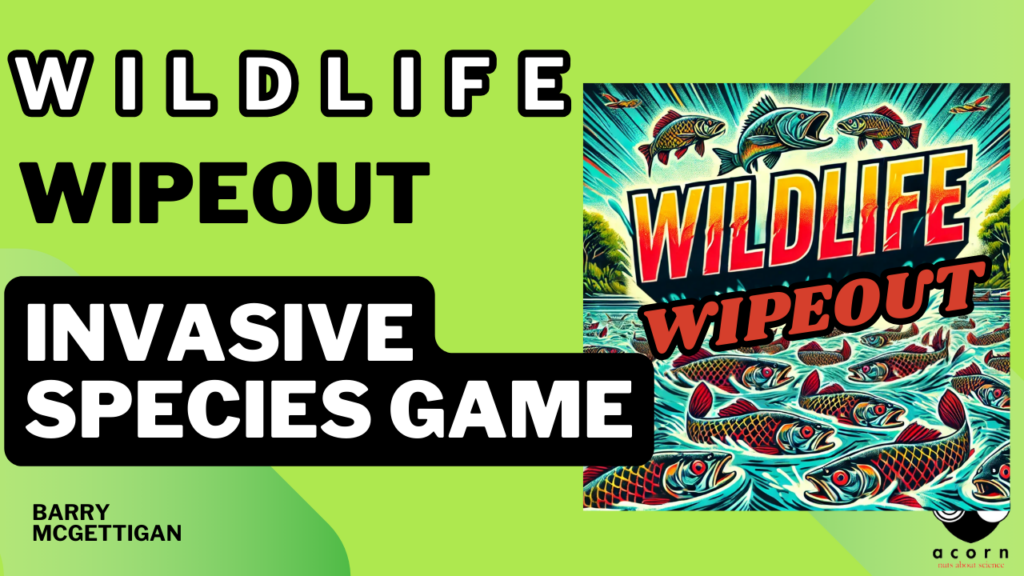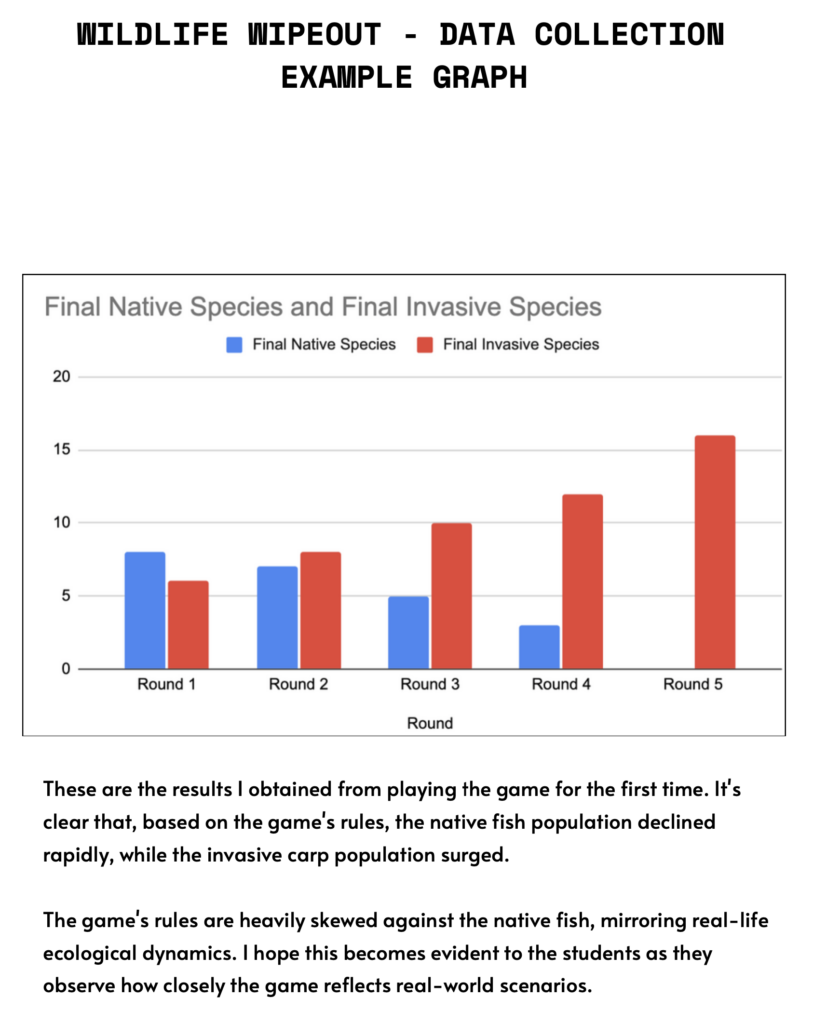
If you’re looking for an engaging way to teach students about this critical environmental issue, the “Wildlife Wipeout” game is what you’ve been waiting for! Students love to learn about invasive species; it appeals to their curiosity about how nature’s “troublemakers” can shake up entire ecosystems.
What Is the “Wildlife Wipeout” Game?
“Wildlife Wipeout” is a classroom activity designed to simulate the impact of invasive species on native ecosystems. The game allows students to observe how quickly an invasive species, in this case, the Asian carp, can outgrow and overpower native species in a shared habitat.
I made this as easy as possible to set up; it’s simply Skittles (or any candy), a dice, and a plastic cup. Although the game is straightforward, there will always be only one outcome: the invasive species will dominate after playing a few rounds. This is the same as real life, and the rules are loaded from the start. Students will make this connection either through playing the game or in the post-game reflection.

To play the “Wildlife Wipeout” game, students are divided into small groups and given a cup (representing the habitat), colored Skittles or small candies (representing native species and the invasive Asian carp), and a dice. Each group starts with 10 pieces of the native species and 2 of the invasive species in their habitat. The game is played in rounds, where students roll the die to simulate population growth, competition, and reproduction. Depending on the die roll, they add new individuals to the population or remove native species as the invasive species compete for resources. After several rounds, students track the changes in population and visually see how invasive species can quickly outcompete native species. The game is a fun and hands-on way to show the devastating effects of invasive species on ecosystems.
The “Wildlife Wipeout” game is a fun, hands-on way to dive into an ecosystem simulation. It helps students understand how certain species can take over and disrupt the balance, much more effectively than just talking about it in class. By the end, they can really see how quickly things can get out of control, making it clear why managing these species is so important.
Post-Game Reflection and Learning
“Wildlife Wipeout” includes a post-game discussion where students reflect on the results they observed. Questions like “What happened to the native species?” and “How did the Asian carp impact the ecosystem?” encourage students to think critically about the dynamics they witnessed and how these lessons apply to real-world environmental challenges.
In addition, students can graph their results (we all love a good graph), offering a visual representation of population changes. This reinforces data interpretation skills while driving home the lesson about how invasive species affect biodiversity.

